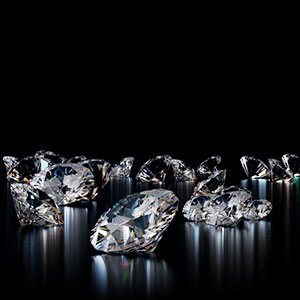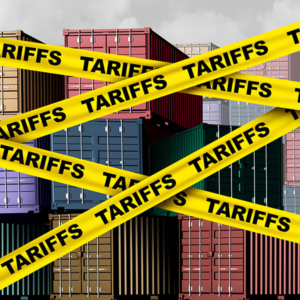
At the JCK Show, I was with a group of people who work with lab-grown who were upset that a certain lab was supposedly lax in its lab-grown grading.
“It doesn’t matter,” one said. “It’s only lab-grown.”
I’ve complained in the past that some people in the lab-grown world sometimes devalue their product, and that’s a good example.
Of course the grades do matter, or at least they should. Otherwise, why have the report at all?
When lab-growns were first introduced, trade members disagreed on whether they should be graded along the standard GIA color and clarity scale, rather than the “category grades” originally favored by the GIA and eventually Lightbox. Today, that’s largely been settled. Almost all labs offer standard “Four C” grades for lab-grown diamonds.
But just because the scales are the same doesn’t mean the methods are.
As lab-grown prices have continued to fall, I’ve heard some complain that they are spending more on the diamond grading reports than on the actual diamond. And so lately, we’ve seen retailers and growers develop procedures to provide low-cost alternatives to grading them individually.
For example:
• In its prospectus, the International Gemological Institute (IGI) says it does “in-factory” grading for top growers, which sometimes involves the factory’s employees and equipment—a change from the traditional way independent labs have graded diamonds.
• De Beers’ Lightbox brand, which didn’t grade its diamonds when it premiered, now issues “verification” reports for its diamonds. The GIA does “batch verification” checks for its highest-quality stones.
• Then there’s the Grown Diamond Trade Organization (GDTO), which issues reports based on retailer “quality controls,” and argues that labs shouldn’t look at every lab-grown stone individually.
They “really shouldn’t be certified in the way mined diamonds are certified,” David Sherwood, CEO of Daniel’s Jewelers, and a member of the GDTO’s advisory board, told me in Vegas. “If you’re pulling something out of the earth, you need to send it to a third party. You manufacture something to certain specifications, you shouldn’t send it to a third-party laboratory….
“What is the [grading] lab actually doing? They’re telling me that something is a VS1 when it was designed to be a VS1, quality-controlled to be a VS1, and the retailer agreed [through its quality controls] it’s a VS1. I don’t need [a lab to tell me] that.”
So what we have is an industry that’s using the same grading scale, but is sometimes using different methods to get those grades.
Given the economics here, that’s understandable. As long as it’s done honestly, that’s fine. But there must be transparency as well. Consumers need to know when a grade is derived differently from the norm. (Lightbox, for instance, notes the method behind its verification reports here.)
If a shopper is presented with a third-party grading report—or something that’s represented as a third-party report—they might reasonably assume that (a) each diamond will be individually examined, and (b) the examination is done by a neutral arbiter. That’s how grading has traditionally worked.
If a diamond is being graded by the employees of the company that manufactures it, or is subject to quality control rather than individual identification, the consumer should know that. They may not understand all the possible implications of these deviations from the norm, but they shouldn’t be kept in the dark about them.
I’ve argued that the lab-grown diamond industry should embrace the reality that it’s a new industry and veer away from the outdated and extremely complicated 70-year-old GIA diamond grading scale. The sector could even develop its own quality measurement system, with tech tools, that would be far more scientific than what we have now. But as long as the lab-grown industry is sticking with the tried-and-true grading scale, many people will assume that it’s using tried-and-true grading methods. And if not, it should at least let people know.
Photo: Getty Images
- Subscribe to the JCK News Daily
- Subscribe to the JCK Special Report
- Follow JCK on Instagram: @jckmagazine
- Follow JCK on X: @jckmagazine
- Follow JCK on Facebook: @jckmagazine






